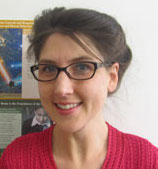Dancing and the Brain
- Published1 Mar 2009
- Reviewed13 May 2014
- Author Sarah Bates, MS, MA
- Source BrainFacts/SfN
Toes tap, wrists flick, arms extend, but it is the brain that dances. Many parts of the brain act together to turn a body’s motion from discrete movements into a fluid, physical art form. Watching or executing a moment of dance, several regions of the brain may become active: they may speedily calculate spatial orientation, readjust motor signals, or attach emotional responses to the choreography.
Our brains are the directors of our bodies’ orchestra of movement, allowing dancers — be they professionals on stages or amateurs in living rooms — to move precisely in time and space. Exactly how the brain manages dance was the topic of discussion at the annual “Dialogues Between Neuroscience and Society” presentation at Neuroscience 2008. Renowned dancer, choreographer, and conductor Mark Morris of New York talked with neuroscientists about the intersection of dance and brain science.
Practice makes perfect
Researchers have long sought to discover exactly how exquisite body movement is controlled, learned, and appreciated by others. Morris, who began his dance training at the age of 8, explained that practicing the same steps repeatedly helps decrease the body’s response time to create seamless motion in time with music.
By the time you've done a particular sequence thousands of times it feels like nothing,” Morris said. “It’s like driving or something where you’re just there. You just got there and you don’t have to consciously look at your feet.”
“Ideally, dancers aren’t thinking ‘five, six, seven, eight, now’s my entrance,’ they just do it. It’s the thing where a fish doesn’t know it’s in water. That’s how it is in dancing.”
Orchestrated or planned movements start in the motor cortex. This region is divided into sections, with each governing a different part of the body. Signals from the motor cortex travel down 20 million nerve fibers in the spinal cord to an arm or finger, telling it to respond in a particular way. The more minute the movement, the greater the area in the motor cortex devoted to the movement.
To achieve a rhythmic, well-coordinated style of dance, the brain must coordinate all this effort for joints to act in proper order and muscles to contract to perfect degree. A cluster of brain cells called the basal ganglia plan movement, while the cerebellum takes sensory input from the limbs and refines signals in the cortex to smooth out motion.
A sixth sense
Each limb of the body is defined in part by its distance to everything else. The ability to understand our position in space is called proprioception — the sense of how far your arms reach when you stick them out — while kinesthesia is the sense of arms and legs in motion in that space.
This sense of physical self-awareness can extend beyond the body to clothes and props, or even other people. For a trained dancer, Morris said in his Dialogues appearance, such body awareness is like a sixth sense.
“To dance in front of thousands of people you have to have a lot of confidence, and that means a great deal of physical awareness,” explained Morris. “You somehow do this calculation of where the person is behind you. Our broad conception of proprioception is, ‘This is me here.’”
The joy of dance
For individuals who struggle to coordinate the most basic movement, dance is a superb release and learning experience. The degenerative disorder Parkinson’s disease (PD) destroys basal ganglia neurons, causing tremors, stiffness, and halting movements, hardly the hallmarks of a dancer.
Yet, Dance for PD, a joint project between the Mark Morris Dance Group and the Brooklyn Parkinson Group, offers people with Parkinson’s the chance to engage in ballet, tap, jazz, and modern dance exercises. In sessions, patients learn from movement experts how they can use their senses and brains to control movement.
While there is growing interest in understanding how and whether dance could benefit PD patients physiologically, the classes appear to improve mood and concentration. Further insight and advances, however, may yet reveal new treatments for human disorders in different ways, including through dance and rhythm.
CONTENT PROVIDED BY
BrainFacts/SfN
Also In Archives
Trending
Popular articles on BrainFacts.org




















